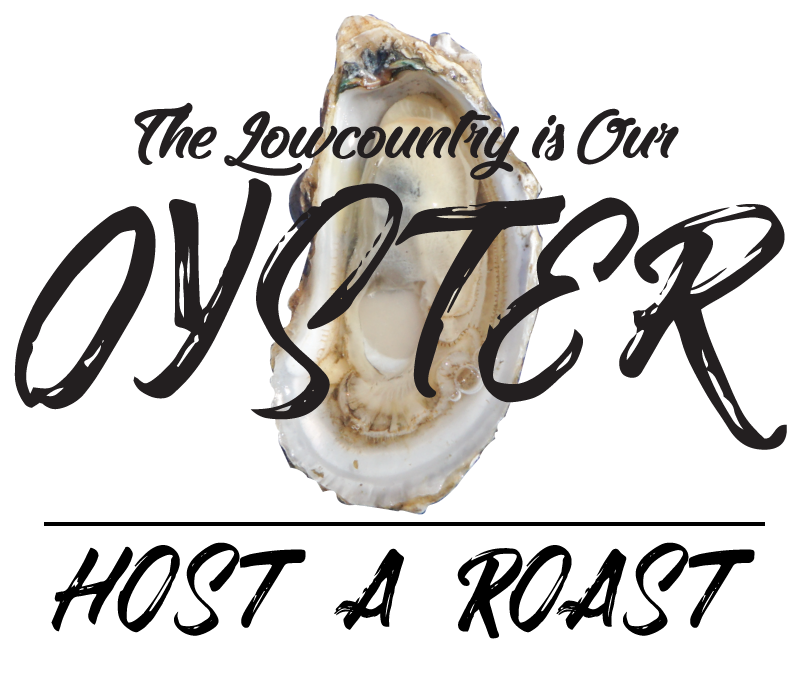
Lowcountry oyster roasts are synonymous with chilly weather, partly because it’s fun to bundle up and congregate outdoors by an open fire, but also because wild oysters simply taste their best in winter. Why? Falling water temperatures cause salinity levels to spike, just as wintering marsh grasses release tons of nutrients into our creeks, enabling oysters to bulk up quickly. This means plumper, saltier, more flavorful oysters—just how we like them.
Oyster roasts can be grand (such as Boone Hall Plantation’s huge annual event in late January that tears through 80,000 pounds of bivalves), but typically roasts take the form of laid-back community gatherings or small backyard get-togethers. The rule of thumb is: Don’t get fancy. We’ve come a long way since the early 1800s when oyster roasts were seated affairs with butlers serving steaming hot whiskey punch out of silver pitchers.
Nowadays, oyster roasts are casual, but that doesn’t detract from their allure. In the words of retired oyster caterer Ben Moise, “If you are standing up and eating with your fingers, you’ve got to be having fun.” Hosting your own roast is as easy as a phone call should you choose to hire a caterer to stage the occasion from set-up to clean-up, but if you are willing to put in the work yourself, here’s how to do it.
Reserve freshly harvested oysters from your local purveyor (see list, opposite page), figuring one bushel for every six guests. You can pick up your oysters a day ahead if you store them in a cool place. Stock up on cocktail sauce, hot sauce, saltines, and drinks of choice. Beer is standard, but some guests gravitate towards wine, whiskey, and even (gasp) Champagne. I once overheard a stranger comment at a roast, “I can’t think of anything that doesn’t go well with oysters!”
You’ll need a long outdoor table for people to gather around (nothing too precious; some¬thing that can be hosed off when you’re done). Some people place slabs of plywood over large barrels, then cut circles in the plywood with trash cans beneath as receptacles for discarded shells. A fold¬out picnic table with trash cans positioned at each end works fine. You’ll also need sturdy and dull-edged oyster knives, which can be found at most Lowcoun¬try grocery stores and any kitchen supply store. Supply thick kitchen towels or oyster gloves (one per guest) to handle the piping hot, jagged oysters and protect your hands from sharp shells and oyster knife slip-ups.
While there are newfangled, propane-fired oyster steamers, we love the old-school, time-tested method of cooking oysters over a fire pit, which is vastly more entertaining to boot. For this, you’ll need a large slab of sheet metal no more than a quarter-inch thick, plus brick or cinder-block supports beneath each corner to allow you fire access for tend¬ing and stoking. When the fire is flaming hot and glowing with embers, you are ready to roast.
Rinse your oysters with a hose if they weren’t washed well by your supplier. Dump a layer of oysters on the hot metal surface, distributing them to ensure they cook evenly. Cover them with a damp towel or burlap sack to retain steam (don’t let it dry out, lest it catch fire). Let the oysters sizzle and sputter for eight to 10 minutes as the heat parts their shells slightly open. Don’t overcook. Using a clean, flatbed shovel, transfer the oysters to the waiting table and instruct your guests to “grab ’n’ growl.”
Add more wood to the fire and keep steaming oysters to your guests’ content. Newbies or young ones might need a little guidance in the technique of gently coaxing open shells by twisting a knife at the oyster’s hinge rather than attempting to force the knife inward (it can slip and cut your hand). Once open, run the knife beneath the oyster to detach the muscle from the shell, then savor away! And remember, if you find a tiny crab in your oyster, eat it. Not only are pea crabs sweet and crunchy, they are said to bring good luck.
Perhaps the most important aspect is the recycling of shells, vital to the regrowth of local beds. Nancy Hadley at the DNR esti-mates that only 10 percent of our shells get recycled. So if you think your few bushels don’t count, think again. The DNR needs your participation, and they offer numerous shell drop-off points.